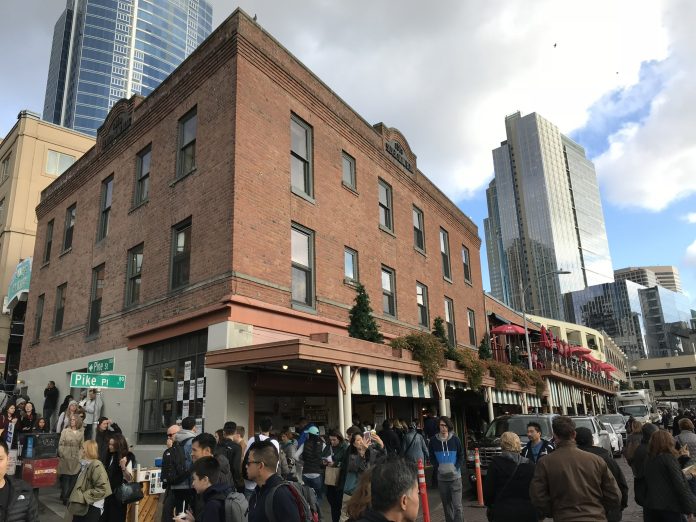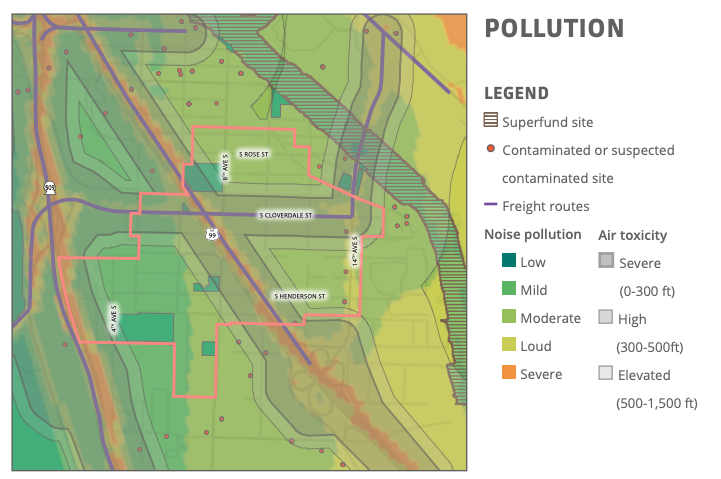
Every year in advance of the state legislature convening for its new session, cities around the state update their agenda. The Washington State legislature’s 2022 session will be short next year, with just 60 days to advance any legislation that didn’t pass during the 2021 long session or introduce new bills. But updating the legislative agenda is a good way to look at the overall shared goals which elected leaders have articulated that they’d like to accomplish. The City of Seattle has released its draft legislative agenda, and the areas where the document has changed since last year will likely yield the most insight into city’s current priorities. Here’s a look at those priorities in the area of transportation.
Increased Pedestrian Infrastructure
Seattle’s 2021 legislative agenda called out a need for safety improvements in the transportation realm, particularly for people who are walking, biking, and rolling. But the 2022 agenda is more specific in what the city sees as leading to improvements in that area. Not surprisingly, the City is on record in support of expanding the pilot transit lane and block-the-box enforcement camera program, currently set to expire after the 2023 session without action from the legislature. Currently Seattle is only able to install 20 block-the-box cameras and transit lane cameras along a small number of specific corridors. It’s not clear at this point if Seattle’s delay in widely deploying cameras until nearly a year and a half after it received the authority may impact its chances for renewal, but 2022 will see those cameras added to intersections and transit lanes around greater downtown.
The updated agenda reads:
“We support efforts to improve transportation safety, particularly for vulnerable users such as bicyclists and pedestrians, including increased local authority to designate pedestrian zones and set speed limits. We recognize that a complete sidewalk network connected to reliable, frequent transit is the foundation of a sustainable, accessible and equitable city and therefore support policies that would fund the construction of missing sidewalks and safe and accessible crossings, and ensure these essential transportation facilities are maintained and accessible. We support expanded City authority for automated traffic camera enforcement.”
Designating pedestrian zones and setting speed limits are both goals that serve to improve programs being developed by the Seattle Department of Transportation. In 2017, then interim-Mayor Tim Burgess pledged that Seattle would create a major segment of the city that is free of vehicle emissions by 2030. That pledge has been languishing ever since, but a memo sent this year identified several legislative hurdles. The City of Seattle cannot designate any street to have a speed limit of lower than 20 mph, and state law actually prohibits walking in the “street” if there is a designated sidewalk.
Those regulations also stand in the way of making SDOT’s residential open streets program, Healthy Streets, more effective. Signage currently must be blunt, with “street closed” language even though the streets are open to local-access traffic because of that state law limiting pedestrian movement on streets with sidewalks.
More broadly, the city is requesting additional revenue for pedestrian infrastructure from the state to fund missing sidewalks and accessible crossings. Half of the revenue from the transit lane camera pilot is staying with the city, which is using it to fund Accessible Pedestrian Signals at intersections around the city. However, 88% of intersections lack that feature, leaving a huge funding gap. And of course, nearly a quarter of all street blocks in Seattle lack permanent sidewalks, a fact that even a $100 million investment from the Move Seattle levy in new sidewalks wasn’t able to significantly change.
The legislature may pass a transportation spending package this session, increasing state funding across the board for transportation infrastructure. But the package that the Senate approved in committee late in the 2021 session was a highway-heavy boondoggle that wouldn’t significantly change the game for local governments, particularly when it comes to pedestrian and bicycle infrastucture. The counterpart proposal in the House is slightly better.
Shift Away from Police Enforcement
Last year, language was added to the legislative agenda to state support for policies that would shift enforcement of traffic laws away from armed police. From the 2021 agenda:
“We support the decriminalization of transportation activity to improve safety for travelers and the public. We support ending the use of weaponized enforcement for traffic violations and allowing non-uniformed officers, including those working for a local city department that is not a police department, to perform garage and event management activities.”
The 2022 agenda keeps that language and adds to it.
“We support a policy that would allow for a single flagger to direct traffic without a traffic or police officer present as part of the traffic control plan approved by the city.”
This is a direct reference to a specific bill, SB 5354, which would do exactly that: allow a flagger to direct traffic at events without an officer present. That bill passed the Senate in 2021, but it was sent back after failing to pass in the House. Allowing flaggers to direct traffic without traffic officers present could move the city toward a future where the Seattle Police Department doesn’t have traffic direction duties. SB 5354 as currently written just applies to Seattle.
Another bill, SB 5485, didn’t receive as much support during the 2021 session. Sponsored by Senators T’wina Nobles and Joe Nguyen (who is also sponsoring SB 5354) the bill would prevent law enforcement officers from initiating traffic stops in a broad number of circumstances, including a number of moving violations, driving without a license, or based on the smell of marijuana. That bill hasn’t been endorsed by the City of Seattle and faces strong headwinds in the legislature during the short session, but it also illustrates how far some lawmakers are trying to push to shift traffic enforcement away from armed police.
Seattle Says Remove Freeways
Another new addition to the 2022 legisislative agenda is language that categorically states that the City of Seattle is in favor of removing state freeways that bisect the city. The draft language states:
“We are committed to environmental justice in the transportation sector, including the removal of freeways in marginalized communities such as South Park.”
South Park is adjacent to two state highways, SR-99 and 509. Those highways cut off neighborhoods from one another, contribute noise pollution, and emit air pollution and particulate matter. According to the Duwamish Valley Healthy Communities Project, residents of South Park and Georgetown have an average life expectancy that is 8 years shorter than King County as a whole and 13 years shorter than residents in affluent Laurelhurst.

Seattle’s statement supporting the removal of highways comes at a time when the idea of removing harmful highways nationwide is receiving unprecedented attention. The recently-passed Infrastructure Investment and Jobs Act previously had allocated in it $40 billion to reconnect communities that were divided and destroyed by highways nationwide, but that was pared down to $1 billion. However, cities applying to receive even that small pool of money will help to jumpstart a conversation about what the long term visions for these facilities are.
At a time when the state legislature is still trying to allocate funds for highway expansion, this legislative request is likely to go nowhere, but it’s notable that the City is going on record about this right now.
You can read the entire proposed legislative agenda, which was presented to the City Council this past Monday, here.
Ryan Packer has been writing for The Urbanist since 2015, and currently reports full-time as Contributing Editor. Their beats are transportation, land use, public space, traffic safety, and obscure community meetings. Packer has also reported for other regional outlets including BikePortland, Seattle Met, and PubliCola. They live in the Capitol Hill neighborhood of Seattle.

